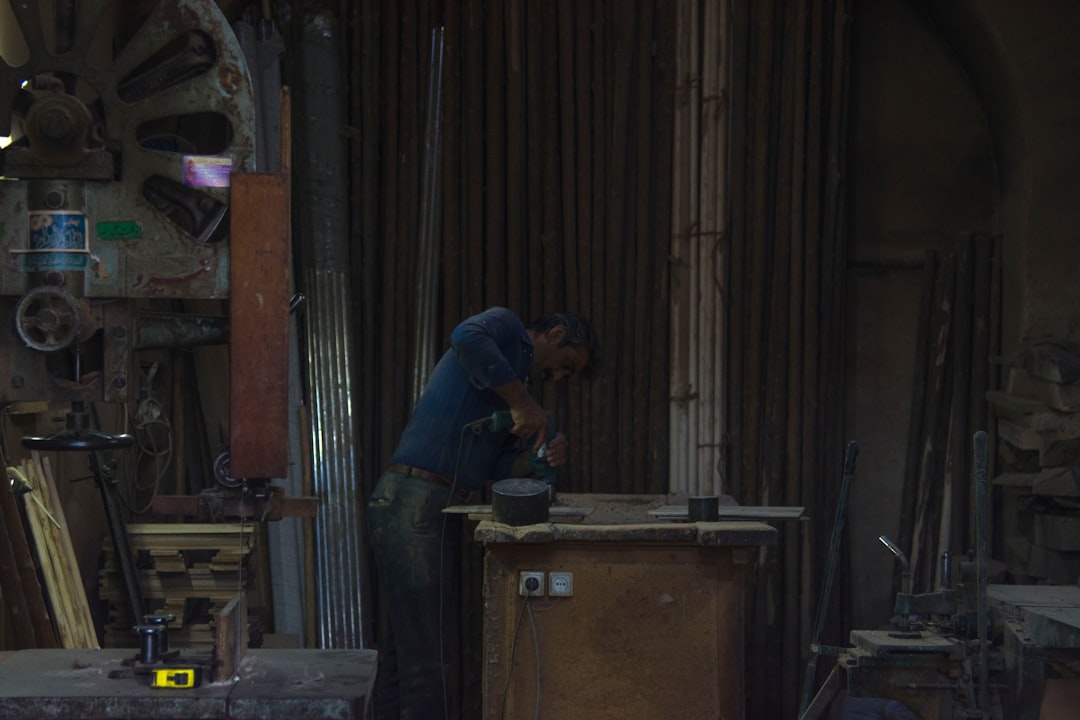In the ever-evolving landscape of design and engineering, Computer-Aided Design (CAD) and Artificial Intelligence (AI) have emerged as pivotal technologies. CAD has revolutionized the way you create, modify, analyze, and optimize designs, allowing for greater precision and efficiency. It has become an indispensable tool in various industries, from architecture to automotive engineering.
Meanwhile, AI is making waves by introducing intelligent systems that can learn from data, recognize patterns, and even make decisions. As these two powerful technologies converge, they are reshaping the future of design and engineering in ways that are both exciting and challenging. As you delve deeper into the world of CAD and AI, it becomes clear that their integration is not merely a trend but a fundamental shift in how you approach design processes.
The synergy between CAD and AI holds the promise of enhancing creativity, improving productivity, and streamlining workflows. However, this transformation also raises questions about the future of jobs in the CAD field. Will AI complement your skills, or will it render certain roles obsolete?
Understanding the current landscape of CAD and AI is essential for navigating this new terrain.
Key Takeaways
- CAD (Computer-Aided Design) and AI (Artificial Intelligence) are revolutionizing the design and engineering industries.
- CAD plays a crucial role in creating precise and detailed designs, while AI is increasingly being used to optimize and automate design processes.
- AI is rapidly gaining traction in design and engineering, with applications such as generative design and predictive modeling becoming more prevalent.
- The integration of AI in CAD has the potential to streamline workflows and improve efficiency, but it also raises concerns about the future of traditional CAD jobs.
- While AI has the potential to automate certain aspects of CAD, human creativity and critical thinking will continue to play a vital role in design and engineering.
The Current Role of CAD in Design and Engineering
Today, CAD serves as the backbone of design and engineering practices across various sectors. You rely on CAD software to create detailed 2D drawings and 3D models that serve as blueprints for everything from buildings to intricate machinery. The precision offered by CAD tools allows you to visualize concepts before they are brought to life, reducing errors and saving time during the production phase.
Moreover, CAD systems facilitate collaboration among teams by providing a shared platform where ideas can be exchanged and refined. In addition to enhancing accuracy, CAD has also democratized design. You no longer need to be a seasoned draftsman to create professional-quality designs; user-friendly interfaces and intuitive tools have made it accessible to a broader audience.
This accessibility has led to an explosion of creativity, as individuals from diverse backgrounds can now contribute their ideas and innovations. As you engage with CAD technology, you find that it empowers you to push the boundaries of what is possible in design and engineering.
The Rise of AI in Design and Engineering

As you explore the rise of AI in design and engineering, you begin to see how it complements traditional CAD processes. AI algorithms can analyze vast amounts of data at incredible speeds, identifying trends and insights that would be impossible for a human to discern in a reasonable timeframe. This capability allows you to make informed decisions based on data-driven insights rather than relying solely on intuition or experience.
For instance, AI can optimize designs by suggesting modifications that enhance performance or reduce costs. Moreover, AI is increasingly being integrated into CAD software itself. Features such as generative design leverage AI to explore multiple design alternatives based on specified parameters, enabling you to discover innovative solutions that you might not have considered otherwise.
This shift towards AI-driven design not only enhances creativity but also accelerates the design process, allowing you to focus on higher-level tasks while the software handles repetitive calculations and simulations.
The Impact of AI on CAD Jobs
| Metrics | Impact |
|---|---|
| Job Automation | AI has led to automation of repetitive CAD tasks, reducing the need for manual intervention. |
| Job Creation | AI has also created new job opportunities in CAD, such as AI model training and maintenance. |
| Skills Requirement | AI has increased the demand for CAD professionals with AI and machine learning skills. |
| Efficiency | AI has improved the efficiency of CAD design processes, leading to faster project completion. |
As AI continues to permeate the design and engineering landscape, its impact on CAD jobs is becoming increasingly evident. You may find that certain tasks traditionally performed by CAD professionals are being automated, leading to concerns about job security. For example, routine drafting work can now be completed by AI algorithms with remarkable speed and accuracy.
This shift raises questions about the future roles of CAD technicians and designers—will they need to adapt their skill sets to remain relevant? However, it’s essential to recognize that while AI may automate specific tasks, it also creates new opportunities within the industry. As you embrace AI technologies, you may find yourself taking on more strategic roles that require critical thinking, creativity, and problem-solving skills.
The ability to interpret AI-generated insights and apply them effectively will become increasingly valuable in the job market. Rather than viewing AI as a threat, consider it an opportunity to evolve your career in exciting new directions.
The Potential for AI to Replace CAD Jobs
The fear of job displacement due to AI is a common concern among professionals in the CAD field. You might wonder whether advancements in AI will lead to a significant reduction in demand for traditional CAD roles. While it’s true that some positions may become obsolete as automation takes over routine tasks, it’s crucial to understand that AI is not designed to replace human creativity and intuition.
Instead, it serves as a tool that enhances your capabilities. In many cases, AI can augment your work rather than eliminate it. For instance, while an AI system may generate multiple design options based on specific criteria, it still requires your expertise to evaluate those options critically and select the best one for a given project.
The collaborative relationship between humans and AI can lead to more innovative solutions than either could achieve alone. As you adapt to this new reality, you’ll likely find that your role evolves into one that emphasizes creativity, strategic thinking, and collaboration with intelligent systems.
The Benefits of AI in CAD

The integration of AI into CAD processes brings numerous benefits that can significantly enhance your workflow. One of the most notable advantages is increased efficiency.
This shift not only boosts productivity but also allows for faster project turnaround times—an essential factor in today’s competitive landscape. Additionally, AI can improve the quality of your designs by providing real-time feedback and suggestions based on data-driven insights. For example, if you’re working on a structural design, an AI system can analyze load distributions and suggest modifications that enhance stability while minimizing material usage.
This level of precision helps you create designs that are not only aesthetically pleasing but also functional and sustainable.
The Limitations of AI in CAD
Despite its many advantages, AI is not without limitations when it comes to CAD applications. One significant challenge is the reliance on data quality; if the data fed into an AI system is flawed or incomplete, the resulting insights may be misleading or inaccurate. As you work with AI tools, it’s essential to maintain a critical eye and validate the outputs against your own expertise and experience.
Moreover, while AI excels at pattern recognition and optimization based on existing data, it lacks the innate creativity that humans possess. You may find that certain design challenges require out-of-the-box thinking or an understanding of cultural nuances—areas where human intuition shines. Therefore, while AI can enhance your capabilities, it cannot fully replace the unique perspective you bring to the design process.
The Future of CAD Jobs in an AI-driven World
As you look ahead to the future of CAD jobs in an increasingly AI-driven world, it’s clear that adaptability will be key. The landscape is evolving rapidly, and those who embrace change will be better positioned for success. You may need to acquire new skills related to AI technologies—such as data analysis or machine learning—to remain competitive in the job market.
Furthermore, interdisciplinary collaboration will become increasingly important as teams integrate diverse skill sets to tackle complex projects. You might find yourself working alongside data scientists or software engineers as part of a multidisciplinary team focused on leveraging AI for innovative design solutions.
The Role of Human Creativity in CAD and AI
In a world where AI plays an increasingly prominent role in design and engineering, human creativity remains irreplaceable. While AI can generate numerous design options based on predefined parameters, it lacks the ability to infuse designs with emotional resonance or cultural significance—qualities that are often essential for successful projects. As you navigate this landscape, your unique perspective as a designer will continue to be invaluable.
Moreover, human intuition allows you to make connections between seemingly unrelated ideas or concepts—an ability that is difficult for machines to replicate. As you collaborate with AI tools, consider how you can leverage your creativity alongside these technologies to push boundaries and explore new possibilities in design.
The Skills Needed for CAD Jobs in the Age of AI
To thrive in the age of AI-driven CAD processes, you’ll need to cultivate a diverse skill set that combines technical proficiency with creative problem-solving abilities. Familiarity with AI technologies will be crucial; understanding how machine learning algorithms work or how to interpret data analytics will set you apart from your peers. Additionally, honing your skills in software tools that integrate AI features will enhance your efficiency and effectiveness as a designer.
Equally important is developing soft skills such as communication and collaboration. As projects become more interdisciplinary, being able to articulate your ideas clearly and work effectively within diverse teams will be essential for success. Embrace opportunities for continuous learning—whether through formal education or self-directed study—to ensure you’re well-equipped for the challenges ahead.
Adapting to the Changing Landscape of CAD and AI
In conclusion, the integration of CAD and AI represents both challenges and opportunities for professionals in design and engineering fields. As you navigate this changing landscape, it’s essential to remain adaptable and open-minded about how these technologies can enhance your work rather than replace it. Embrace the potential for increased efficiency and creativity that comes with AI while recognizing its limitations.
By cultivating a diverse skill set that includes technical knowledge of AI tools alongside strong creative problem-solving abilities, you’ll position yourself for success in an evolving job market. Remember that human creativity remains irreplaceable; your unique perspective will continue to drive innovation even as technology advances. As you move forward into this exciting new era of design and engineering, stay curious and proactive in adapting to the changes around you.
The advent of artificial intelligence has sparked widespread discussions about its potential impact on various job sectors, including computer-aided design (CAD) jobs. As AI continues to evolve, many are concerned about the future of these roles and whether machines will eventually replace human designers. An insightful article on this topic can be found on How Wealth Grows, which delves into the nuances of AI integration in the workforce and its implications for CAD professionals. For a deeper understanding, you can read more about it here.
FAQs
What is AI?
AI, or artificial intelligence, refers to the simulation of human intelligence in machines that are programmed to think and act like humans. This includes tasks such as learning, problem-solving, and decision-making.
What are CAD jobs?
CAD, or computer-aided design, jobs involve using specialized software to create, modify, analyze, or optimize designs for various industries such as architecture, engineering, and manufacturing.
Will AI take CAD jobs?
AI has the potential to automate certain aspects of CAD jobs, such as repetitive tasks or design optimization. However, it is unlikely to completely replace CAD jobs as human creativity, critical thinking, and problem-solving skills are still essential in the design process.
How is AI currently being used in CAD jobs?
AI is being used in CAD jobs to automate routine tasks, generate design alternatives, optimize designs based on specified criteria, and assist in the decision-making process. This allows CAD professionals to focus on more complex and creative aspects of their work.
What skills will be important for CAD professionals in the age of AI?
In the age of AI, CAD professionals will need to develop skills in areas such as data analysis, programming, machine learning, and collaboration with AI systems. Additionally, strong problem-solving, creativity, and critical thinking skills will continue to be valuable in the design process.
